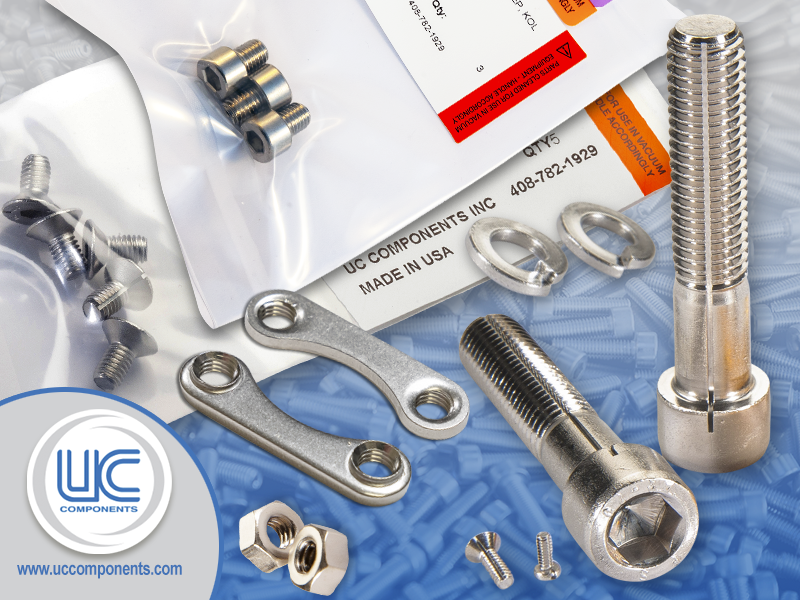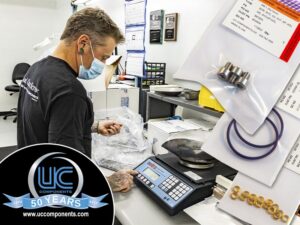Platings affect not only how a metal fastener looks, but also its hardness, electrical conductivity, coefficient of friction, and how it will withstand corrosion or wear resistance. Metal fasteners often come into contact with dissimilar metals, which is a recipe for corrosion and a whole host of other problems. Even the smallest component can ruin the overall effectiveness of a product or cause significant challenges, which in turn may determine a manufacturer’s success or failure.
Nickel plating is used extensively to plate fasteners to provide better corrosion and wear resistance. Nickel will not chip or flake, as some other decorative finishes may, which makes it extremely attractive for critical industries such as defense and aerospace. It also provides excellent adhesion for other coating layers and is often used as an “undercoat” for other coatings such as gold, chromium, or silver.
How is the process performed?
There are two main ways to plate a fastener with nickel – electroplating and electroless plating.
- Nickel electroplating is an electrolytic process that utilizes electricity to deposit a layer of nickel onto an electrically conductive metal substrate.
- Electroless nickel plating is an auto-catalytic reaction that deposits the coating onto the fastener substrate.
Of course, those are not the only two types of plating performed with nickel. Other types of nickel plating include bright nickel plating which leaves a remarkably leveled and glossy surface, zinc-nickel plating which adds zinc to the mix for even better corrosion resistance, and others.
What are the main benefits of selecting nickel plating?
Nickel plating is an excellent choice to add or enhance the properties of a variety of metals. The benefits of nickel plating include, but are not limited to:
| Appearance | The finish can be bright, semi-bright, or matte in appearance. |
| Diffusion barrier | Makes a suitable barrier between the plated material and a second layer material such as silver or gold. |
| Enhanced corrosion resistance | Enhances the resistance to a wide variety of corrosive materials such as acids, alkali, ammonia, hydrocarbons, salt water, solvents, and more. |
| Enhanced wear resistance | Ideal for high-performance applications or harsh conditions. Nickel will maintain its appearance and brightness over long periods. |
| Hardness and material stability | Nickel can fill small holes and cracks which can help stabilize the materials and give the fasteners a more even surface. |
| Improved conductivity | Improves conductivity in electrical applications and components. |
| Improved ductility | Enhances ductility which allows a component to be shaped, formed, or finished without cracking. |
| Improved tensile strength | The process enhances the overall tensile strength of the plated material. |
| Improved resistance to the elements | Nickel plating enhances overall resistance to UV radiation, moisture, temperatures, and other harsh environmental conditions. |
What applications is this type of coating used for?
Nickel plating is used extensively in applications such as (but not limited to):
- Aerospace applications
- Automotive applications
- Chemical processing equipment
- Electronic applications
- Food processing equipment
- And more
While the right coating or plating for your vacuum or critical application is best defined by your process engineer, we are always here to assist you. UC Components, Inc. has been the world leader in high vacuum hardware for clean-critical applications since 1974. By partnering with experts like UC Components, Inc. in engineering and supply, manufacturers like you not only solve incumbent issues such as galling, but also boost safety, quality, speed to market, and profitability.
How can UC Components help you?
UC Components, Inc.’s RediVac® screws, washers, hex nuts, and O-rings are specifically designed for use in a wide range of high vacuum applications and clean-critical environments. We offer a range of finishing processes, including coatings and platings that are designed to prevent galling and/or improve the corrosion resistance of the treated component. All are vacuum compatible and dependent on your specific process chemistry.
Our plating and coating finishing processes include:
- Silver Plating (-A/-NA)
- Gold Plating (-AU/-NAU)
- Nickel Plating (-K/-NK)
- MoS2 Coating (-C/-NC)
- WS2 Coating (-W/-NW)
- Electropolishing (-EP/-NEP)
- Kolsterising® (-KOL/-N-KOL)
Also, every single one of our RediVac® components, from silver-plated screws to WS2 coated washers to untreated hex nuts, goes through our certified Class 100 / ISO Class 5 Cleanroom precision cleaning and packaging processes prior to shipment. Your parts arrive ready for vacuum service immediately.
Take a moment to look over our standard products. Can’t find exactly what you are looking for? We also offer a wide array of prototypes and custom parts that are not listed in our standard online product offerings. Give us a call or send us an RFQ. Our experts are here to help you select the right fasteners for your specific application. Contact UC Components today.



